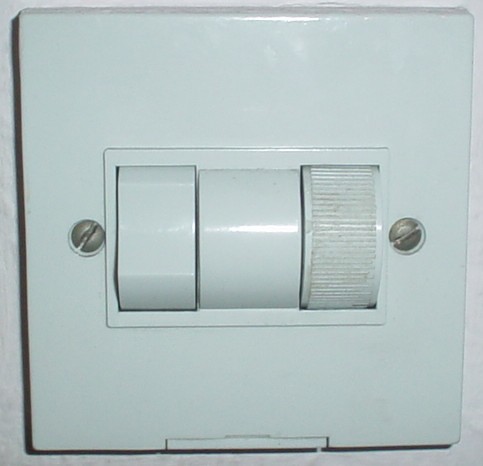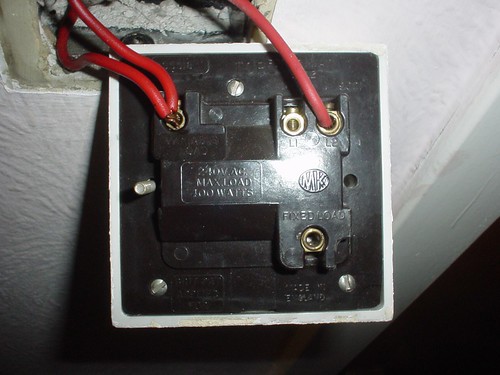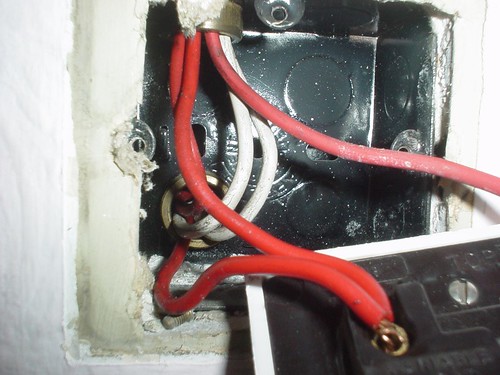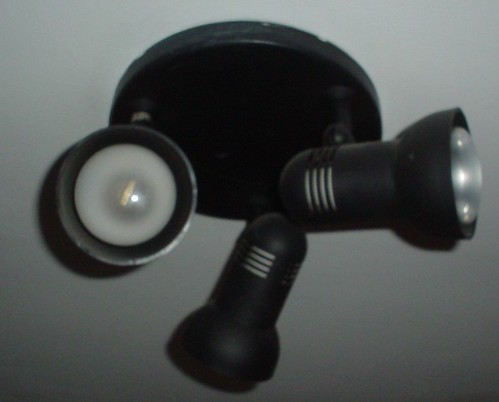- Joined
- 1 Feb 2007
- Messages
- 13
- Reaction score
- 2
- Country

I have a plastic dimmer switch arranged with a vertical on/off switch on the left and a vertical rolling dimmer on the right. There are no other switches connected to the light fitting it controls (a three-way spotlight using R63 screw-fitting bulbs).
I want to remove the dimmer facility because
a) I never use it - if I want soft lighting we have table lamps
b) It buzzes a little if you use it on anything other than full brightness (always has and I've had the house for nearly 17 years) - this is another reason I never use it
c) It has a little fuse which blows every time a bulb blows
d) I'm told you can't use low energy bulbs with a dimmer switch
So, I had a look inside and it has four terminals arranged thus:
Variable Load ................................ L 1 ....... L2
.....................................................................
.....................................................................
.....................................................................
..................................................... Fixed Load
Variable Load has two red wires in it, and L2 has one red wire in it. The L1 and Fixed Load terminals are empty.
First question: Why are there two wires in Variable Load, considering there are no other switches connected to the light fitting?
Second question: Can I just move the two wires from Variable Load to Fixed Load and achieve my desired result of (a) disabling the dimmer switch and (b) not needing to replace the little fuse every time I replace a bulb?
Equally, can I replace the whole thing with an ordinary plastic light switch, putting the two wires (that are together) in one side and the other wire in the other side?
Kind regards
Peter
I want to remove the dimmer facility because
a) I never use it - if I want soft lighting we have table lamps
b) It buzzes a little if you use it on anything other than full brightness (always has and I've had the house for nearly 17 years) - this is another reason I never use it
c) It has a little fuse which blows every time a bulb blows
d) I'm told you can't use low energy bulbs with a dimmer switch
So, I had a look inside and it has four terminals arranged thus:
Variable Load ................................ L 1 ....... L2
.....................................................................
.....................................................................
.....................................................................
..................................................... Fixed Load
Variable Load has two red wires in it, and L2 has one red wire in it. The L1 and Fixed Load terminals are empty.
First question: Why are there two wires in Variable Load, considering there are no other switches connected to the light fitting?
Second question: Can I just move the two wires from Variable Load to Fixed Load and achieve my desired result of (a) disabling the dimmer switch and (b) not needing to replace the little fuse every time I replace a bulb?
Equally, can I replace the whole thing with an ordinary plastic light switch, putting the two wires (that are together) in one side and the other wire in the other side?
Kind regards
Peter




